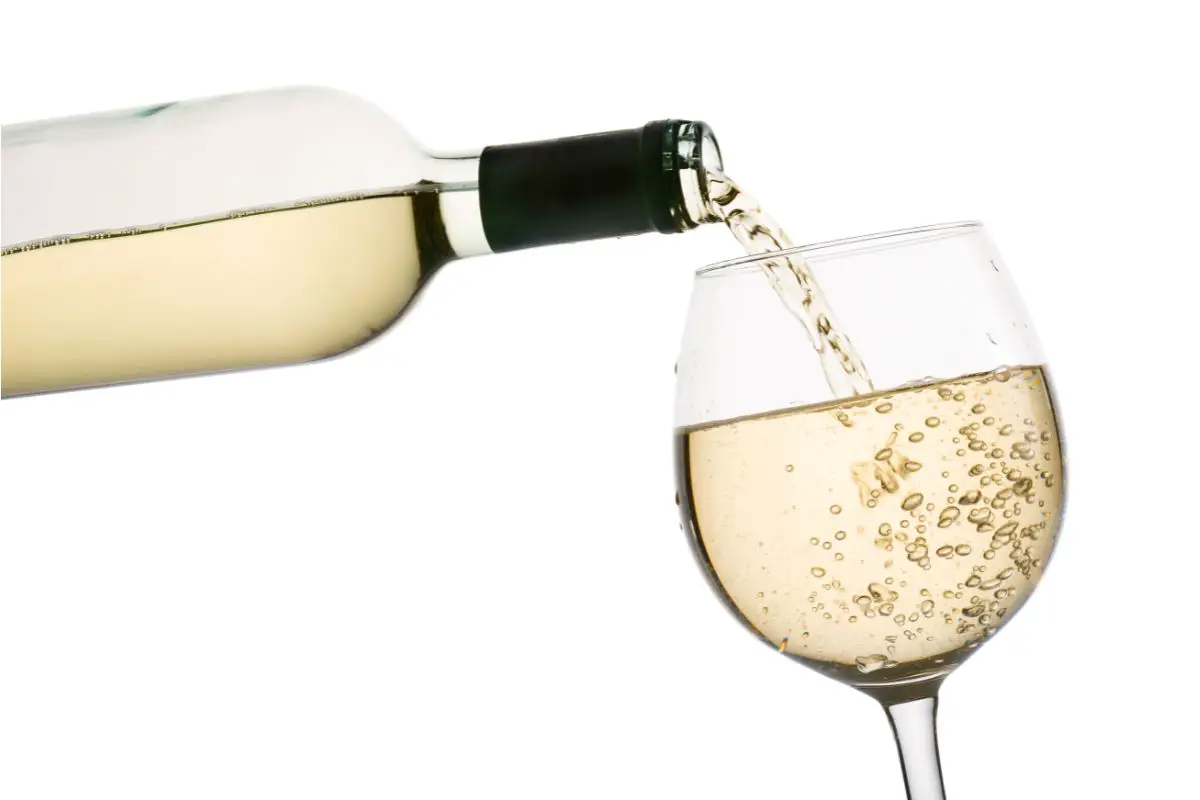When it comes to working out how many glasses of wine there are in a bottle, we have to take various factors into consideration. The first is the size of the bottle. The standard size of a bottle of wine is 750 ml but you can get both smaller and larger bottles. The second factor is the measure of wine poured. The usual size is 125 ml or 4.5 fluid oz but it can be more.
In this article, we will look at the different sizes of wine bottles, how much wine there should be in a glass, and how many glasses of wine there are in different bottles.
How Much Wine Should Be Poured into a Glass?
If you go to a bar or restaurant, chances are you will be offered either a small or a large glass of wine. A small glass is the standard measure of 125 ml or 4.5 fluid oz while a large glass is 175 ml or just above 6 fluid oz.
Restaurants and bars will generally measure the amount of wine but it can be difficult to do this if you are hosting a party or dinner. You could come off as mean if you do this. If you do want to limit the amount of wine served, the wine should just come up to the curve of the bowl.
If you are out having a few drinks, remember that the cost of a standard glass is usually as much as the bar has paid for a bottle. You should attempt to work out if it is more economical to buy a large glass rather than a small one. If there is a group of you, you could buy the whole bottle. It will save you money in the long run.
Why is it Important to Measure How Many Glasses of Wine are in a Bottle?
If you are hosting a party, it is important to measure the number of glasses in a bottle so that you have enough wine to serve. It would be embarrassing if you ran out of wine. Of course, it can be difficult to ascertain how many bottles you need as some people don’t drink much and others are heavy drinkers. It is always best to buy more bottles than you think you will need. If you have any bottles left over, you will have them for another occasion.
It can, however, be difficult for a guest if he or she is poured just a 125 ml glass. It could make them think that there isn’t much wine so they will have to adjust their drinking habits and perhaps drink slower.
The Capacity of Wine in a Standard Wine Bottle
In general, you will purchase standard bottles of wine. These contain 750 ml of wine or 25.5 fluid oz. You can fill five to six glasses of wine with 125 ml or 4.5 fluid oz. If you are exact, you will fill six glasses but it isn’t too difficult to add a drop or two each time you pour so you might only get five and a bit glasses out of the bottle.
Wine glasses come in different shapes. When it comes to red wine, the glasses can hold anything between 227 ml and 625 ml or 8 – 22 fluid oz. Because red wines have bold aromas, it is better to pour 125 ml into each glass so that you can easily swirl the wine to allow the aromas to disperse. Because of this, you should get six glasses of wine out of the bottle.
White wine glasses have the same capacity but they don’t need as much space. You can pour more wine into each glass. If you pour 175 ml, you will get four glasses with a little left over.
With a dessert wine glass, you won’t want to pour as much as it is sweet and rich. The average serving size is 57 ml or 2 fluid oz. so you should get 13 glasses out of a bottle.
When it comes to a champagne flute, they should be filled further up the glass. You can fill each glass with 175 ml so you should get four glasses of wine out of each bottle with a little left over.
The Capacity of Wine in the Largest Wine Bottle
The largest wine bottle holds an amazing 30 liters of wine. Imagine trying to lift it! It is called the Midas and if you serve 125 ml glasses you can fill 240 glasses.
Perhaps you want to pair the largest bottle of wine with the largest glass which is the goblet. Goblets have a capacity of between 284 ml and 397 ml or 10 – 14 fluid oz. You won’t want to fill the glass to the top as you will want to swirl the wine and take in the aromas. On average, you would get 105 goblet glasses out of a Midas bottle. If, on the other hand, you pour the wine into a dessert glass with an average pouring of 57 ml, you will get around 520 glasses of wine.
Although the price of a Midas bottle might seem expensive and perhaps overwhelming, you can easily work out how much a standard bottle of the same wine would cost. You will probably be surprised that the bottle isn’t as expensive as you first think. If you are having a big party, the Midas bottle could be the way to go.
The Capacity of Wine in the Smallest Wine Bottle
The smallest wine bottle is the Piccolo or Split which holds 187.3 ml of wine or 6.58 fluid oz. It will fill about a glass and a half so it’s really a bottle for one person. You often get served piccolos on airplanes and in some bars. If for some reason, you want to serve it to more than one person, you can pour the wine into dessert glasses. You should be able to get three glasses out of the bottle but people might think you’re a bit mean!
Other Sizes of Wine Bottles and Their Glass Capacity
- Methuselah: This is a champagne bottle and it holds six liters of liquid. If you serve 125 ml of champagne in each glass, you will get 48 glasses out of the bottle.
- Rehoboam: This is another champagne bottle and it holds 4.5 liters of wine. You can get 36 glasses out of the bottle if you serve 125 ml in each glass.
- Magnum: A Magnum is twice the size of a standard bottle of normal wine so you can fill 12 125 ml glasses with the liquid.
- Jeroboam: A Jeroboam contains 3 liters of wine and can fill 24 wine glasses if you serve 125 ml measures.
- Balthazar: A Balthazar bottle of wine contains 12 liters of wine so will cater for 96 wine 125 ml glasses.
- Nebuchadnezzar: There are 15 liters of wine in a Nebuchadnezzar bottle. If you serve 125 ml measures, you will get 120 glasses.
- Sovereign: A Sovereign wine bottle contains 26 liters of liquid and can fill 208 125 ml wine glasses.
Of course, you may want to fill up the glasses higher so you won’t get as many glasses but with this amount of wine, why worry?

Tips For Pouring Wine
-
Measure the wine.
You will find that bars and restaurants will use a measuring cup or will have glasses with lines on them indicating the different measurement levels. They do this for consistency and stocktaking purposes.
You could do the same at home but we suggest that you use glasses with measurements rather than a measuring cup. If you use a measuring cup, people may think that you are stingy. If you use glasses with measurements, you can discreetly look at the lines without people noticing. However, after a while, you will come to know how much wine to put in each glass without the need for tools.
-
Serve your wine from a decanter or aerator.
If you drink red wine regularly, it is a good idea to decant it. Red wine is bold and has strong aromas and the increased oxygen exposure during decanting greatly improves the taste by softening astringent tannins and allowing the fruit and floral aromas to come out. You can decant white wines and roses as well but it isn’t essential. However, young strong red wines absolutely need to be decanted because their tannins are more intense. The only wines that shouldn’t be decanted are champagnes and sparkling wines. This is because it will deflate the fizz.
It isn’t difficult to decant wine. If your bottle has been lying horizontally, stand it up for a day. This allows the sediment to settle at the bottom of the bottle. Then tilt the neck of the bottle towards the decanter, keeping the bottom of the bottle below 45 degrees. This stops the wine from gushing out. Pour the wine into the decanter slowly, stopping if you see any sediment about to go in. Put the bottle back upright for a few moments and then start again. Leave a little wine at the bottom of the bottle with the sediment. You can decant your wine up to four hours before drinking it.
Alternatively, use an aerator which is even easier than decanting. All you have to do is attach the aerator into the mouth of the bottle. It quickly forces air into the bottle improving its flavor and texture. Ensure that the aerator is secure so that you don’t spill any of the wine when you pour it into the glasses.
Final Thoughts
We hope this article has helped you decide how many bottles of wine you need when you are entertaining. The last thing you want is to not have enough bottles of wine. Decide what measures you will be serving and stick to these. Work out how much you think each person will drink, then buy the bottles accordingly. It is always better to purchase more bottles than you think you will need for the event. If there are bottles left over, you can always use them at a later date. If the bottles aren’t open, they will last for years. Happy drinking!


